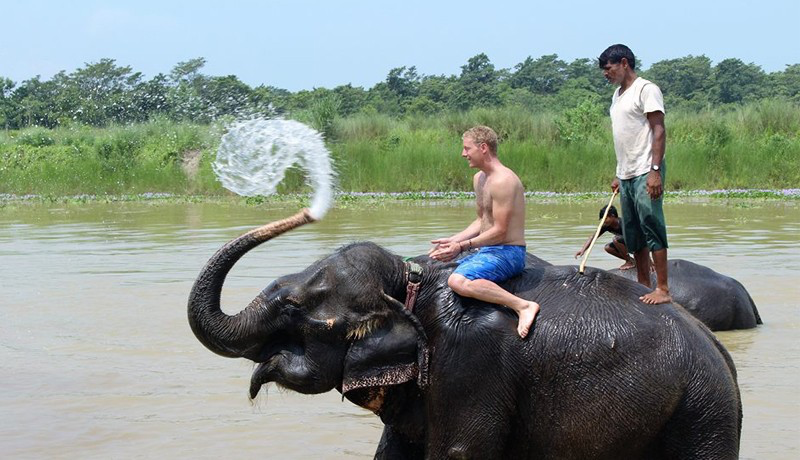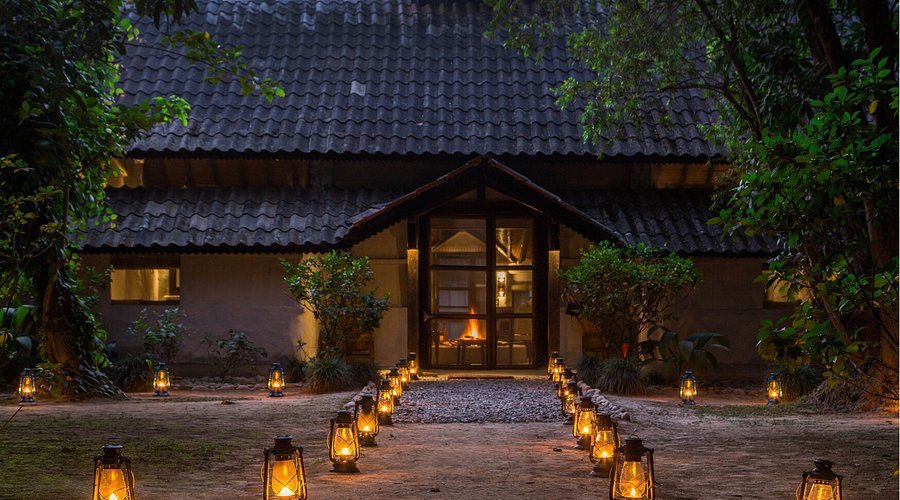Bring Back Tiger Tops: Nepal’s Lost Jungle Jewel and a Wake-Up Call for Tourism




Deep in the dense, wildlife-rich jungles of southern Nepal lies Chitwan National Park — a pristine haven of biodiversity and cultural heritage. Established in 1973 by His Majesty the late King Mahendra, with the support of legendary conservationist and founder of Tiger Tops, Jim Edwards, it was Nepal’s first national park. Today, it is a UNESCO World Heritage Site and one of the most celebrated national parks in South Asia.
Spread across 952 square kilometers in the subtropical lowlands of the Terai, Chitwan is home to over 700 species of wildlife, including more than 120 Royal Bengal Tigers, 600 Greater One-Horned Rhinoceroses, Asian elephants, sloth bears, leopards, and over 500 species of birds. It also shelters the highly endangered Gharial crocodile, contributing to Nepal’s image as a committed conservation leader in Asia.
Within this wilderness once stood Tiger Tops Jungle Lodge — Nepal’s first and most iconic jungle safari lodge. Founded in 1964 by British adventurers Jim Edwards and John Blashford-Snell, Tiger Tops pioneered responsible tourism in Nepal. Long before the term ecotourism became fashionable, Tiger Tops was setting global benchmarks — integrating wildlife conservation, community upliftment, and high-end tourism, with sustainability at its core.
Tiger Tops wasn’t just a lodge — it was a global destination. It attracted iconic guests such as Prince Charles, Queen Sophia of Spain, former U.S. President Jimmy Carter, explorer Sir Edmund Hillary, naturalist Sir David Attenborough, and actor Harrison Ford. Their visits elevated Nepal’s international profile and drew the world’s attention to the unique harmony between nature and heritage in Chitwan.
Its contribution went beyond tourism. Tiger Tops created over 300 jobs, primarily for the local Tharu community. It supported anti-poaching patrols, wildlife research, local education, healthcare, and clean water projects — becoming a holistic model of community-based conservation.
At its peak, Tiger Tops welcomed thousands of high-value tourists annually. A single guest staying a week contributed more to conservation and the local economy than multiple short-stay budget travelers — proving that quality tourism can coexist with environmental stewardship.

However, in 2012, a government policy banned all tourism operations within national parks, citing concerns over environmental impact. This forced the closure of the in-park Tiger Tops Jungle Lodge and other iconic properties, abruptly ending nearly five decades of successful eco-tourism. The impact was immediate: local jobs vanished, village support systems collapsed, research partnerships stalled, and Chitwan lost a key pillar of conservation education and funding.
Even after the closure of the in-park lodge, Tiger Tops Tharu Lodge — located just outside the boundaries of Chitwan National Park — has continued to operate. It carries forward the same legacy of responsible tourism and remains a shining example of community-based, sustainable hospitality — offering immersive jungle experiences and cultural exchanges while empowering the local Tharu community. However, the loss of in-park tourism remains a significant gap in Nepal’s eco-tourism model.
In contrast, countries like India, Kenya, Botswana, and Costa Rica embraced in-park eco-lodges under strict environmental guidelines. These models have proven that with proper regulation and monitoring, eco-lodges not only minimize harm but actively support conservation and community development.

Som Nath Sapkota
Tiger Tops was more than a safari experience — it was a living conservation classroom, a cultural bridge, and a world-class model of sustainable tourism. Its absence is deeply felt, not just in Nepal’s tourism economy, but in its conservation framework and international standing.
According to the World Travel & Tourism Council, tourism contributed 8.46% to Nepal’s GDP in 2025 and supported over one million jobs. As Nepal moves forward in the post-pandemic era, we need to rethink tourism — not just in terms of quantity, but in terms of value, sustainability, and legacy. Reintroducing responsibly operated, high-value eco-lodges like Tiger Tops can be a catalyst for this revival.
To make this vision a reality, Nepal must reform outdated Tourism and National Parks laws. New policies should allow limited, strictly regulated eco-lodges inside parks that meet international environmental standards, operate with minimal impact, and prioritise local hiring. This is not a call for commercialisation — it is a call for strategic engagement with nature, one that respects both environment and community.

In conclusion, Tiger Tops represents more than just a beautiful chapter in Nepal’s tourism history — it symbolises the future we can still reclaim. We urge the Government of Nepal, conservationists, tourism leaders, and citizens to come together to revive this legacy. If we fail to act, we risk losing not just a place, but a vision — a vision of balance, where people and wildlife thrive together, and where Nepal continues to lead the world in sustainable, ethical tourism.
-By Som Nath Sapkota
Tourism Promoter for Wales, Ministry of Culture, Tourism and Civil Aviation, Nepal
सम्बन्धित सामग्रीहरू
हाम्रो सिफारिस
- १
- २
- ३
- ४
- ५











